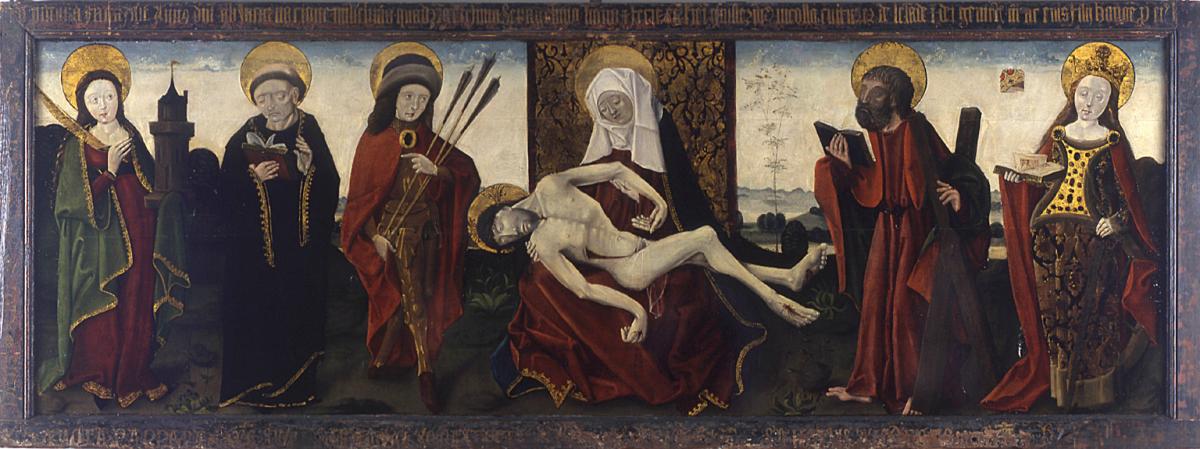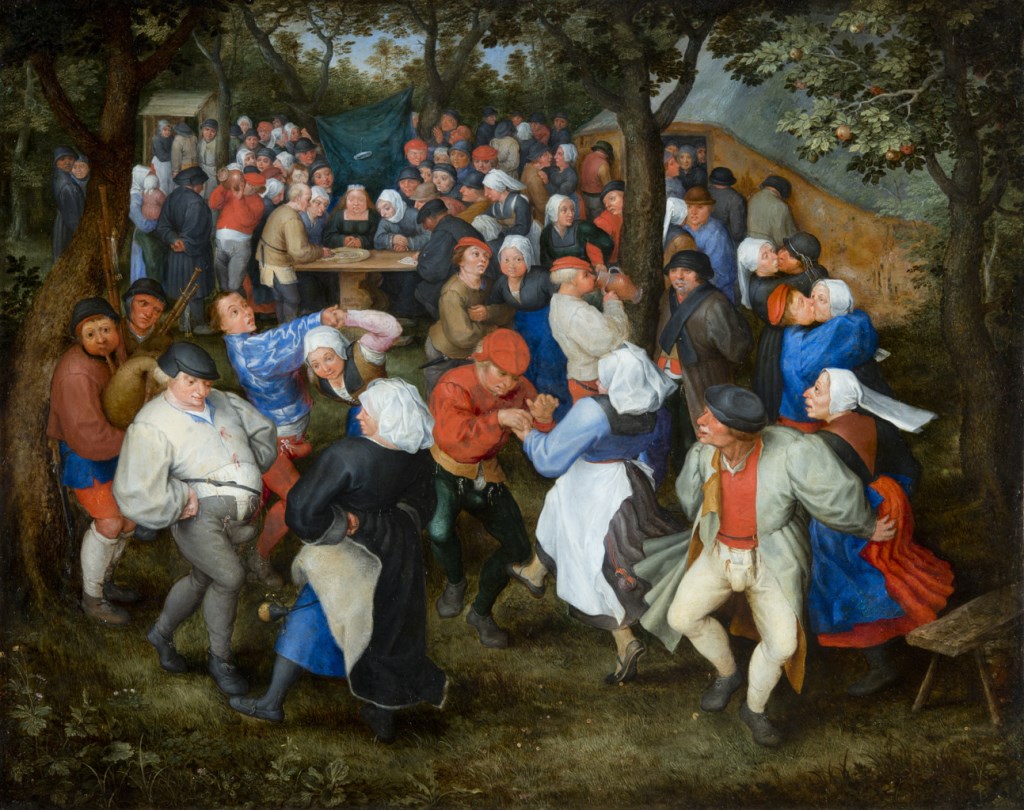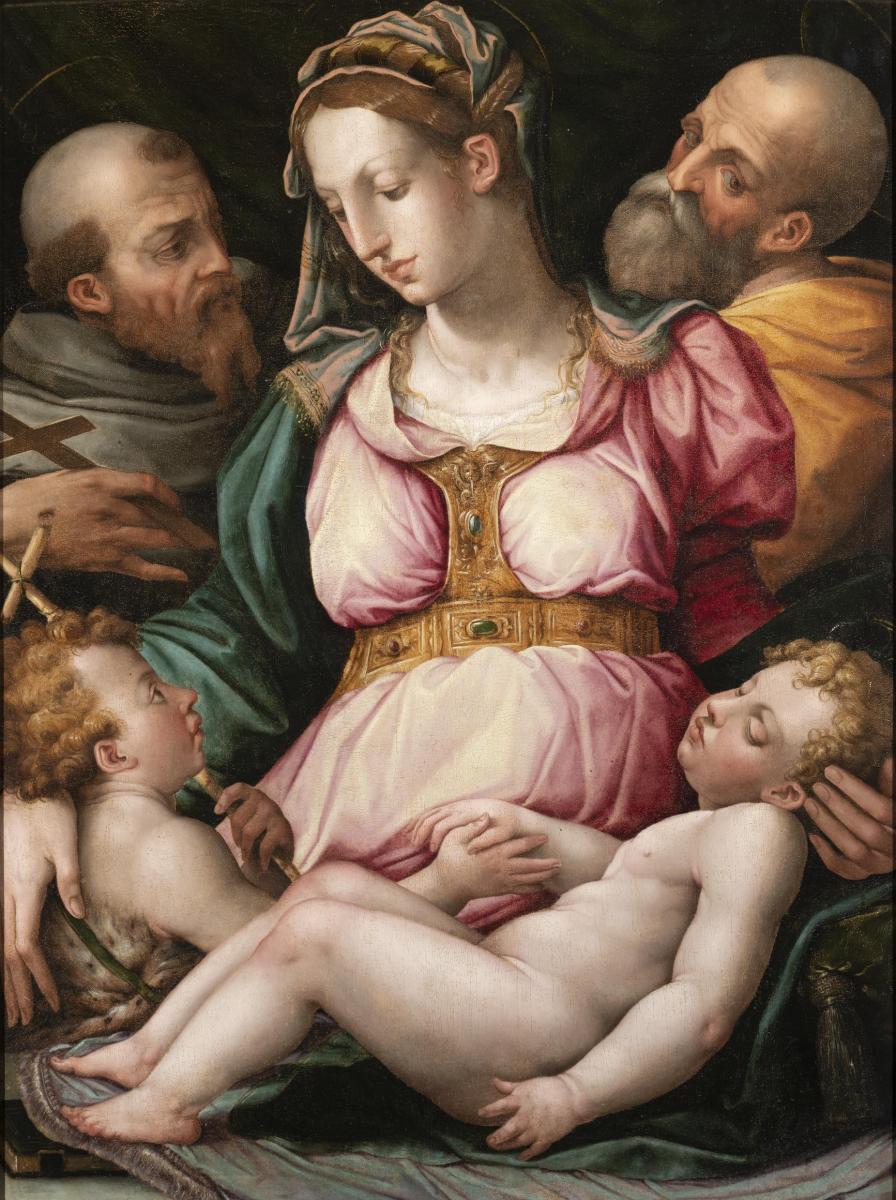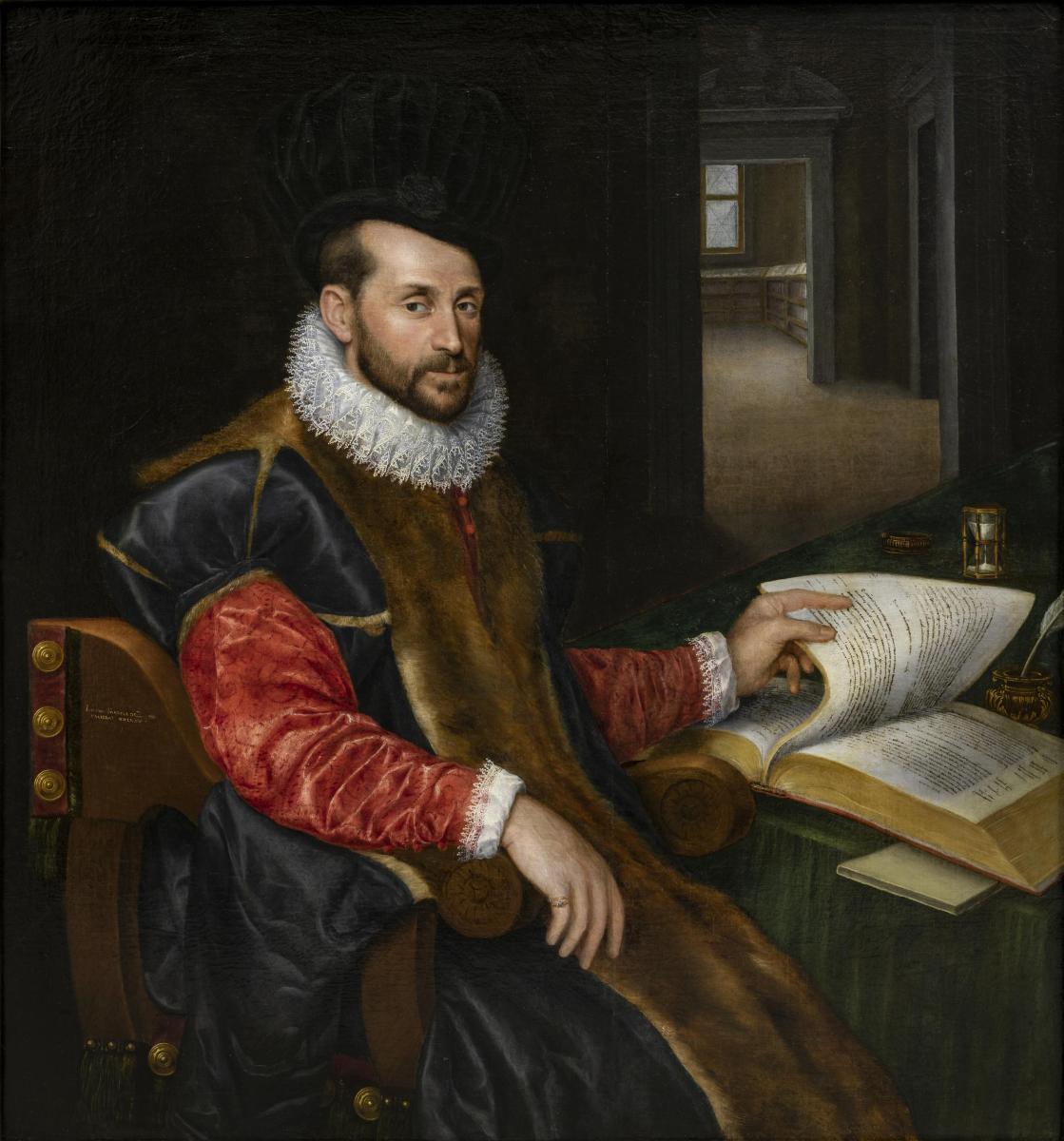Renaissance(s). 15th-16th Centuries
Lacour wing
The Renaissance and its innovations
The Renaissance, a time of cultural and artistic rebirth, marked a sharp break with medieval values and institutions with the recovery of ancient Greek and Roman heritage. Scientific discoveries –, such as the first anatomical dissections, the study of perspective in Florentine art and of oil painting in Flemish art –, radically transformed the way in which human beings and the world were to be represented. These innovations coincided with Humanist philosophy that placed “Man” at the center of the universe and as such, with this new awareness of the individual, portraiture conquered the whole of Europe. Art was no longer devotional, but also became secular, documenting events of contemporary times, alongside the historical.

Hans Clot, Vierge de Pitié entourée de saints, 1469. Photo : F. Deval.

Jan Bruegel, La Danse de noces, cerca 1600.
Photo : F. Deval.
Photo : F. Deval.

Giorgio Vasari,
Sainte Famille avec le petit saint Jean-Baptiste et saint François d'Assise.
Photo : F. Deval.
Sainte Famille avec le petit saint Jean-Baptiste et saint François d'Assise.
Photo : F. Deval.

Lavinia Fontana,
Portrait d'homme assis feuilletant un livre or Portrait dit du sénateur Orsini
1577-1579. Photo : F. Deval
1577-1579. Photo : F. Deval
== Next







